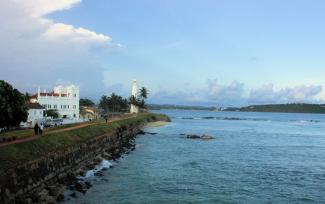
Many of the forts the Dutch built were situated along the coasts of their colonies. The location and shape of these forts tell a story of protecting the settlement from naval forces, and protecting what is inside the fort. The high walls of Galle Fort, for example, were there for defence, naturally, but they also symbolized the status and independence of the people enclosed within them. For the Dutch, this fort was strategically important as a means of protecting Ceylon.
The historic urban structure of Galle, with its recognizable grid pattern, was a typical Dutch example of an overseas fortified city, with its underlying principles of spatial and societal order, protection, and water control. Specific waterways were instrumental in this regard, protecting the goods that the Dutch shipped to and from the fort. Leading inland from Galle Fort, these exclusive canals were sometimes referred to as ‘pepper highways’. An inventive underground sewer system was also built by the Dutch to facilitate proper water management, which has survived the test of time to this day. In December 2004, the fort was battered by a tsunami, but it largely protected the people and heritage objects within this World Heritage Site. This has led to an increased demand for housing within the fort, illustrating another chapter in the protection that the fort gives.
During the last decade, Dutch experts have worked together with Sri Lankan experts to repair the sewerage system and to further conserve the site. Restoring the underground pipelines has provided both parties with knowledge regarding historic water management, and given both countries much-needed insight in repairing damaged water systems.
Project
"Restoration of ancient sewerage system in Galle Fort"
After a first restoration phase in the 1990s, Dutch and Sri-Lankan heritage and water experts started a second round of restoration works between 2006 and 2008. They cleared the sewerage system, reconstructed the surrounding walls and arches, and restored the drains along the sides of the fort’s roads.

